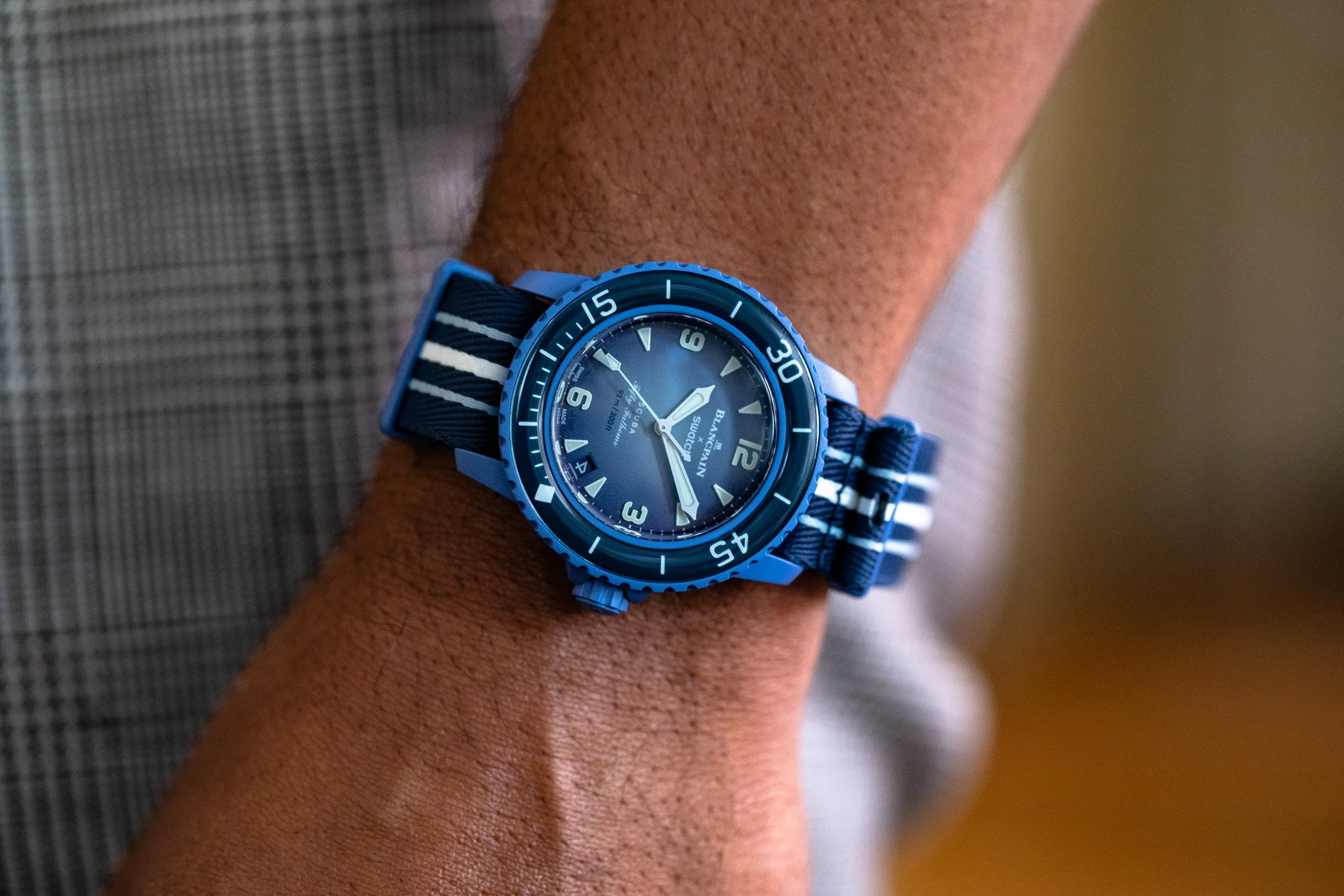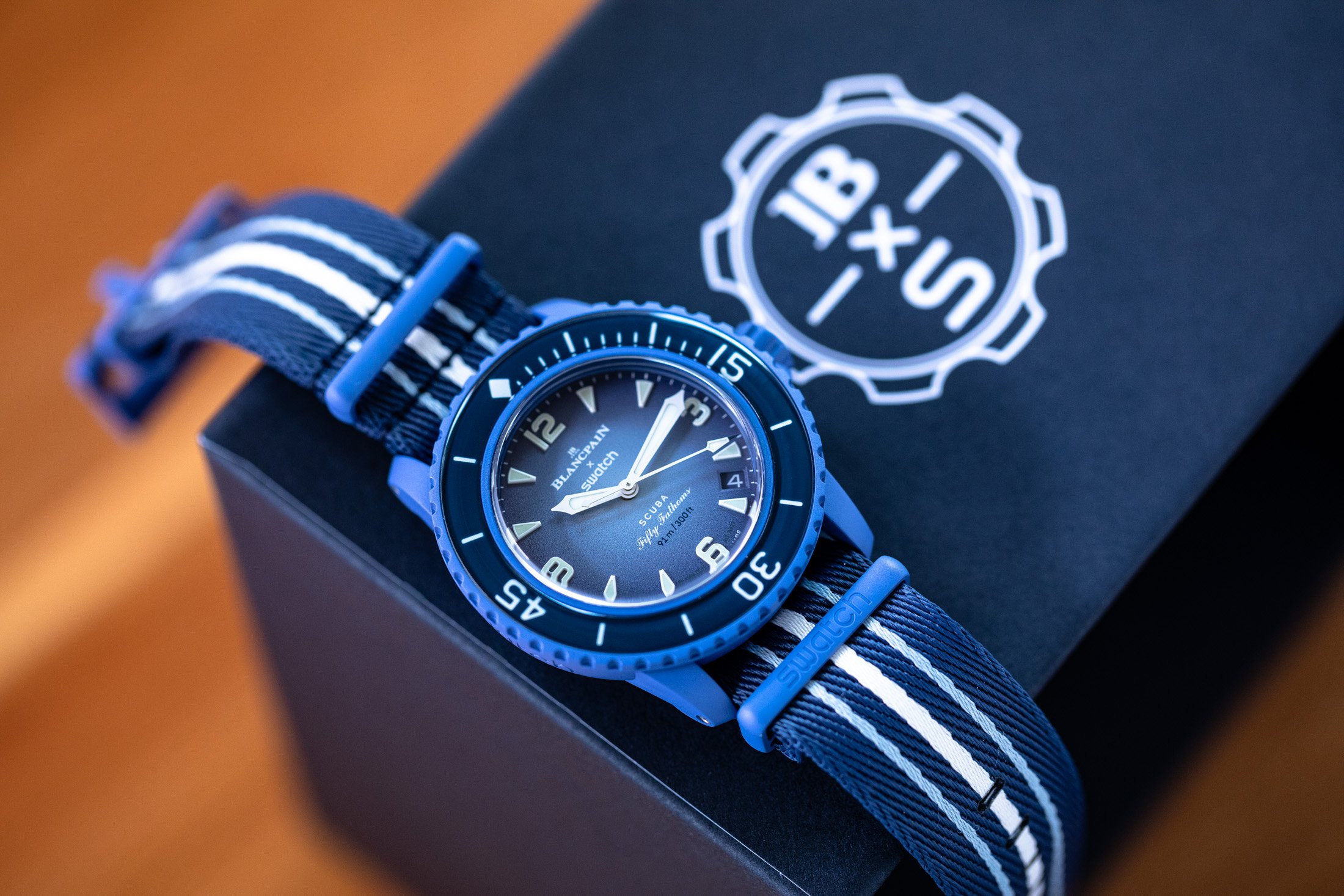Swatch x Blancpain: Our Thoughts?
I know we’re late to the party, but we’re talking about the much anticipated release of the Blancpain X Swatch is finally here. (That week felt like an eternity!)
The 5 Fifty Fathoms in order: Indian Ocean, Diver Heritage, Atlantic Ocean, Arctic Ocean, and Antarctic Ocean
As a collector myself, we’re constantly looking for new watches. As a swatch collector as well, Swatch hit out of the park with this one. For the price point of $400, this release is more interesting and dare I say it, a better value for the money compared to what else is out there in that price point (it’s all about apples to apples) I’m biased as a Swatch lover as I do like the aesthetic. This drop will elevate the brand awareness to the public, which the brand desperately needed.
When people hear “Swatch”, terms such as “cheap” and plastic” come to mind, almost synonymous. Let’s get into some Swatch history real quick. Swatch was founded in Switzerland in 1983 by the merger of two Swiss watchmaking companies, ASUAG and SSIH. The name "Swatch" is a contraction of "Second Watch," indicating the company's intention to offer a more casual, affordable, and fun alternative to traditional Swiss watches. Swatch was born during a challenging time for the Swiss watch industry. The industry was facing what was called the "Quartz Crisis" as quartz watches from Japan flooded the market and threatened traditional mechanical watchmakers. Swatch aimed to counter this trend by producing reliable and affordable quartz watches. Swatch introduced a revolutionary approach to watch manufacturing. By simplifying the design and production processes, they were able to create watches with fewer components, lower production costs, and bold, colorful designs. This approach made Swiss quality more accessible to a wider audience. The brand quickly gained popularity, and the brand expanded globally. The company's success was in part due to its clever marketing campaigns and limited-edition releases. Swatch watches became fashion accessories and collectibles. Swatch collaborated with various artists, designers, and fashion brands to create unique and limited-edition timepieces. These collaborations added an element of creativity and individuality to the brand. Swatch became a cultural icon of the 1980s and 1990s, symbolizing a carefree and colorful spirit.
Photo Credit: Hodinkee
While Blancpain may not have the same level of mainstream recognition as some other brands such as Rolex, Patek Philippe, Omega etc, it continues to be highly regarded among watch connoisseurs and collectors who value its craftsmanship, heritage, and commitment to horological innovation. Of course, Blancpain as a brand is historically important, but unfortunately their marketing/ storytelling isn’t their strong suit. They’re known for great watches, a rich history, but if no one knows what they are, they won’t sell. Dare I say it, does their history even matter if no one can say Blancpain’s story right!. Blancpain has a story to tell and Swatch is arguably starting to story tell. Whether it’s the right or wrong story telling is a topic for another day, but the concern right now is any story telling at all to begin with. The Brand doesn’t have to be kept a secret to the watch world, let alone the general watch market. Watch purists and Blancpain supporters can argue that that’s part of the charm: if you know, you know. Many die-hard collectors will obviously scoff at this release as a “cash grab”, a cheap marketing ploy etc, but on the contrary, its one of the most impressive innovations, relative to its price point. It’s cool for what is: unique and distinctive colors for a Blackpain x Swatch collaboration. The problem is that the brand needs to make money. Business is business and the Swatch group understands that they need to raise numbers for the health of their brands. Swatch is onto something. Yes, this may “cheapen” the brand, but it’s better to have brand awareness than no brand at all. If this can convert a first-time watch buyer to pay attention to Blancpain, then Swatch achieved its goal. It’s refreshing to see the brand, although a conglomerate now, become relevant not only in the watch world but in mainstream media as well.
In other words, if John Goldberger a world-renowned and respected collector, who has one of the coolest, rarest, and most valuable private collections in the world can pull off a swatch (of course, with his avant-garde, Italian personality), so can you.




